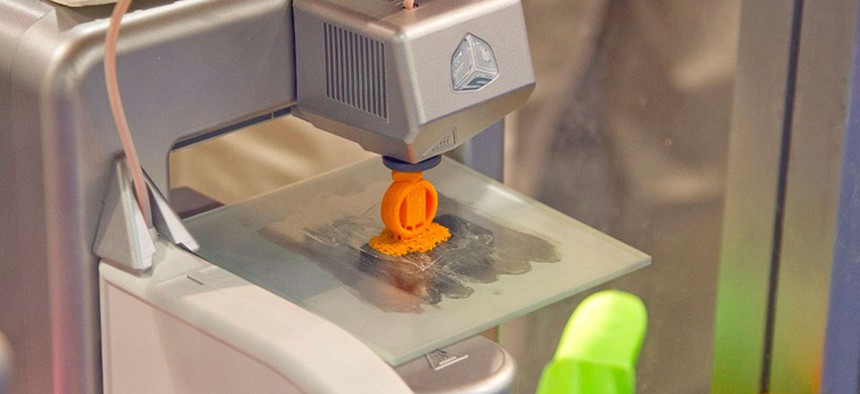3D Printing Could Save the Environment, or Possibly Destroy It

AP file photo
The industry, projected to be worth $6 billion by 2016, could produce a culture of re-use or a culture of waste
Imagine the world of 3D printing fully realized.
There’s no need to run to the store because you lost your travel mug. Just download the design, print one out and grab your coffee to go.
The repair shop won’t have to back order a part when your lawnmower breaks down. They can print one out in the back.
Because products are produced to order rather than coming off an assembly line, it will be easier to print customized versions of things such as hearing aids and retainers that fit perfectly (and last longer as a result).
And when astronauts aboard the the International Space Station needs a part replaced, they won’t need to be resupplied from Earth. They’ll be able to produce the part using a specialized zero gravity printer and make the repair themselves.
Now think about the carbon footprint of this new world. A first glance would suggest it ought to be lower. There will be less need to transport products long distances. The ability to customize products may encourage consumers to keep the products longer.
There could be an environmental downside to 3D printing, though, according to a panel discussion produced last week by the Wilson Center.
One central question is whether the growth of 3D printing, which is projected to be a $6 billion industry by 2016, will produce a culture of re-use or a culture of waste, according to Robert Olson, a senior fellow at the Institute for Alternative Futures.
Under the culture of re-use model, consumers will be less likely to replace their stoves and washing machines if they can print out replacement parts that significantly lower the cost of repair.
Under the culture of waste model, 3D printers will create a “throwaway mentality,” driving consumers to print out useless knick knacks on a whim and reprint them if they don’t like the first versions, Olson said.
Olson also outlined several less ephemeral questions related to the possible environmental impact of 3D printers. In each case, he said, data from the nascent industry could point to either a jump or a dip in environmental degradation.
Wasted materials: High quality 3D printers currently waste very few materials in production, but lower quality ones can waste a great amount.
Energy efficiency: Printers that work with simpler materials can improve energy efficiency but printers that produce titanium aircraft parts and other complex things often use much more energy than standard manufacturing.
Recycling: Many printed objects can be easily recycled, which would reduce overall waste. But some printed objects combine or heat plastics in such a way that they’re not recyclable.
The full discussion is available here.






